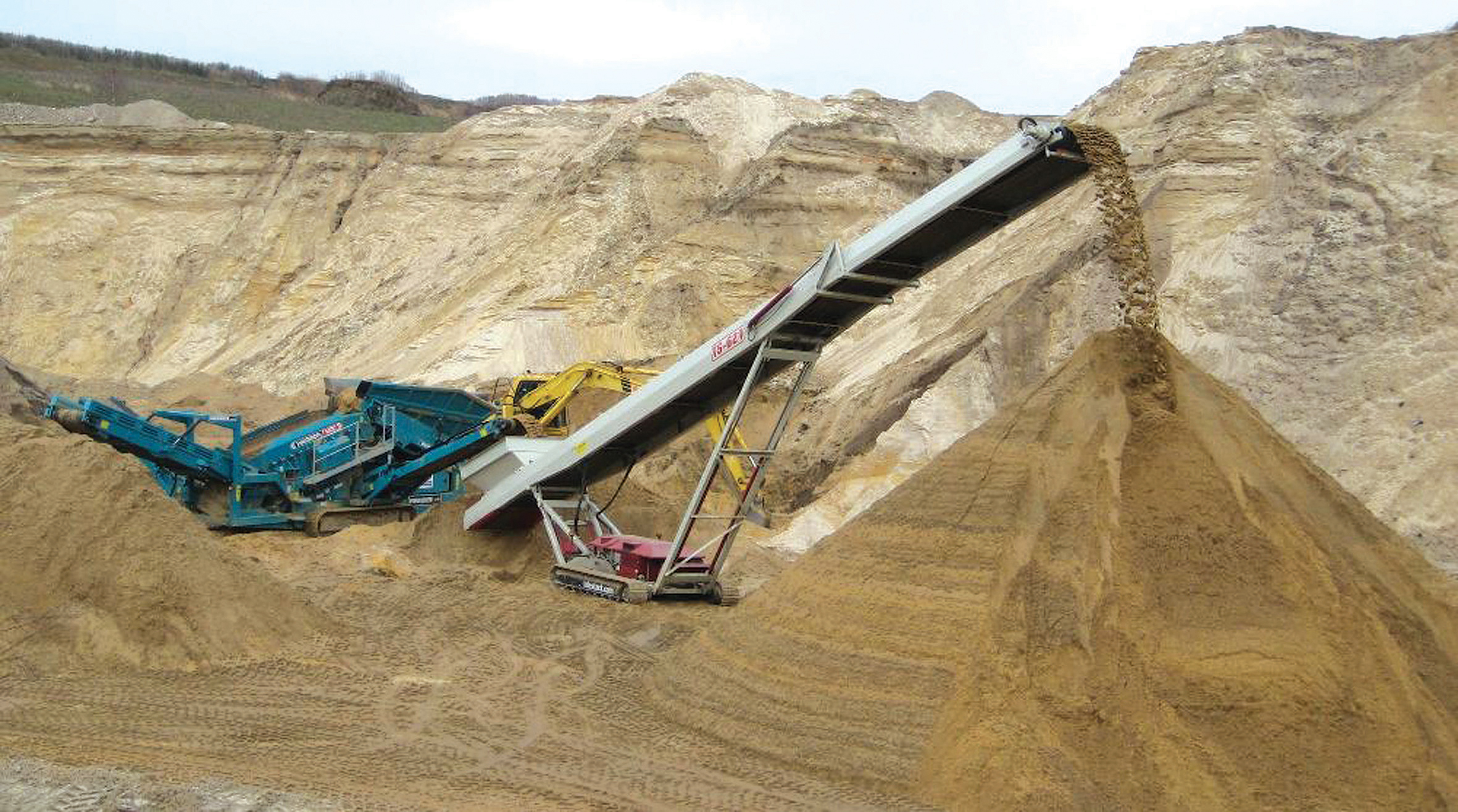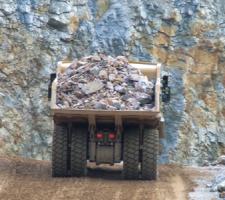
Layout, production and products all have an influence on the hauling choice for many quarries. ABE takes a look at the options
In an ideal world, a quarry would be laid out, planned and equipment fleets purchased to minimise hauling, maximise productivity and to keep the costs as low as possible.
However, many quarries in Europe have been open for more than a century, leaving operators with a less than ideal legacy but it is still possible to improve hauling productivity.
Some believe that rigid dump trucks (RDTs) offer the lowest cost per tonne for hauling and that haul roads and layout should be improved to suit them with the returns outweighing the investment. Other believe that articulated dump trucks (ADTs) offer true versatility to cope with steep hauls and poor ground conditions and others prefer the 'driverless' option of conveyors.
Developments in all three options have improved their application in the quarry in recent years but does one size really fit all? When it comes to hard rock quarries,
But when it comes to sand and gravel quarries, where the hauled loads are generally lighter than blasted rock, then ADTs are very well suited to the task.
The other trend that is helping to drive more quarries towards considering ADTs is the larger models now on offer. According to Terex global products manager articulated trucks George McNeil, the trend towards ADTs has emerged in the last five years. "There has been a general move towards increasing the size of the machines they use and opting for 35 to 40tonne ADTs, in general," he said.
"There has been some development of 50tonne class machines -
Caterpillar ADT marketing product specialist Robert Macintyre believes that one of the factors driving the trend towards ADTs is cost. "More customers are questioning their levels of cost and productivity and that is a good thing," he said. "The lower initial cost is a factor in the choice but the whole life is more important and needs to be considered in terms of cost per tonne to really understand the impact of productivity." McNeil agreed and added, "RDTs generally have a longer life expectancy but have a higher initial cost. One of the major challenges facing ADTs is the arduous conditions within the quarry - the lifespan of a machine in a quarry tends to be shorter than in other applications and shorter than that of an RDT in the same environment.
"Nonetheless it is generally accepted that RDTs are 30% less expensive in terms of repair and maintenance. I know one operator who has replaced all of his RDTs with ADTs and is very pleased with the lower fuel costs per tonne and the higher productivity, which may be true over five to seven years but it may not be the case over a longer period." However, it is the versatility that adds to the benefits of ADTs. "They can be used at every point during the extraction process from removal of the topsoil to hauling of the aggregates and final restoration of the site," said McNeil.
However, more and more quarries are now considering conveyors for hauling.
They have proved to be ideal in long linear quarries for sometime but the lower cost of operation and no need for drivers and fleet management means that their popularity is growing. The development of tracked mobile conveyors is helping to further the case for conveyors in quarries as these can be used with mobile crushing and screening equipment or to fee fixed conveyor systems.
Ireland-based
"The conveyors are the first of their kind in the industry and offer the ability to produce large capacity stockpiles from mobile crushing and screening equipment," said Telestack director Malachy Gribben. "Being able to stockpile more material means that quarry operators do not need to have a wheeled loader continually working to re-handle the aggregates. The cost difference can be huge - typical owning, operating and maintaining costs for a wheeled loader can be €65 per hour but for these new conveyors, it's about €20 per hour." According to Gribben, other benefits of the TC-range conveyors mean that the material remains within specification and safety on the site is also improved as there is less traffic. "For a wheeled loader to produce the same size of stockpile, the operator has to drive up on the pile," explained Gribben. "This not only causes compaction of the graded materials but also has safety implications too. For neighbours near the site, the conveyor also produces less noise." The answer appear to be that to find the optimum solution, quarry owners need to consider not just the existing conditions in the quarry but also how the quarry will develop and what other investment is planned. What is clear is that the latest technology means that there are many ways to improve productivity but careful consideration is needed to find the right solution.















